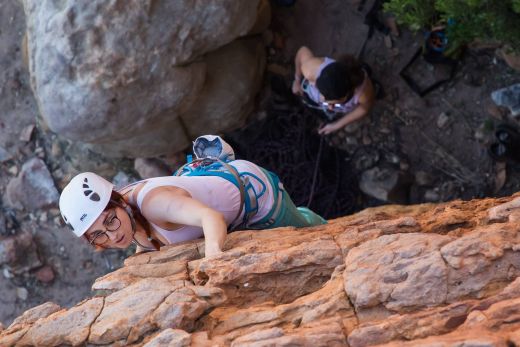So you’ve discovered this thing called rock climbing, and you’re hooked. Now you want to know all there is to know about your new hobby: how to choose gear, how to climb with proper technique, and how to make sense of the lingo. On this website you’ll find articles (linked to above) that go into each of these in depth. Of course, that might be more than you have time to read right now, and so I also give you what you asked for: twelve top tips that you can put into practice when you next visit the gym or crag.
Focus on footwork
The better you use your feet, the more you can save your finger strength for when you really need it. Good footwork has two parts: placement and weighting. The faster you place your feet, the sooner you can shift some weight from your arms to your feet. And the more weight you can shift onto those footholds, the less weight you’ll have to put on your arms while you remain there. Both are skills that can be honed through focussed efforts, but first you’ll need to know what good technique looks like. If you don’t yet know the difference between a backstep, flag, and dropknee, you’ll want to read my article on technique next.
Learn to spot rests
To climb harder, you’ll have to learn to make the most of rests. At the lower grades there will be plenty of opportunities to stem between walls and balance a no-hands rest, but as the grades get stiffer, you’ll have to learn to knee bar, heel hook, and jam – skills that are
indispensable to progressing climbers who want to squeeze every last rest and semi-rest out of a route. You can find more detailed descriptions of these essential skills in my article How To Find Rests.
Climb with straight arms
There’s no reason to tax your biceps in a sustained locked-off position unless you’re pulling a move or reaching to make a clip. The rest of the time you should be hanging on straight arms, essentially putting most of your weight on your skeleton and not your muscles. I say ‘most of your weight’ because you still want to keep your shoulders engaged, thereby protecting these joints. When used excessively, hanging passively can lead to underdeveloped antagonist muscles and injury. Avoid hanging like a bag of potatoes.
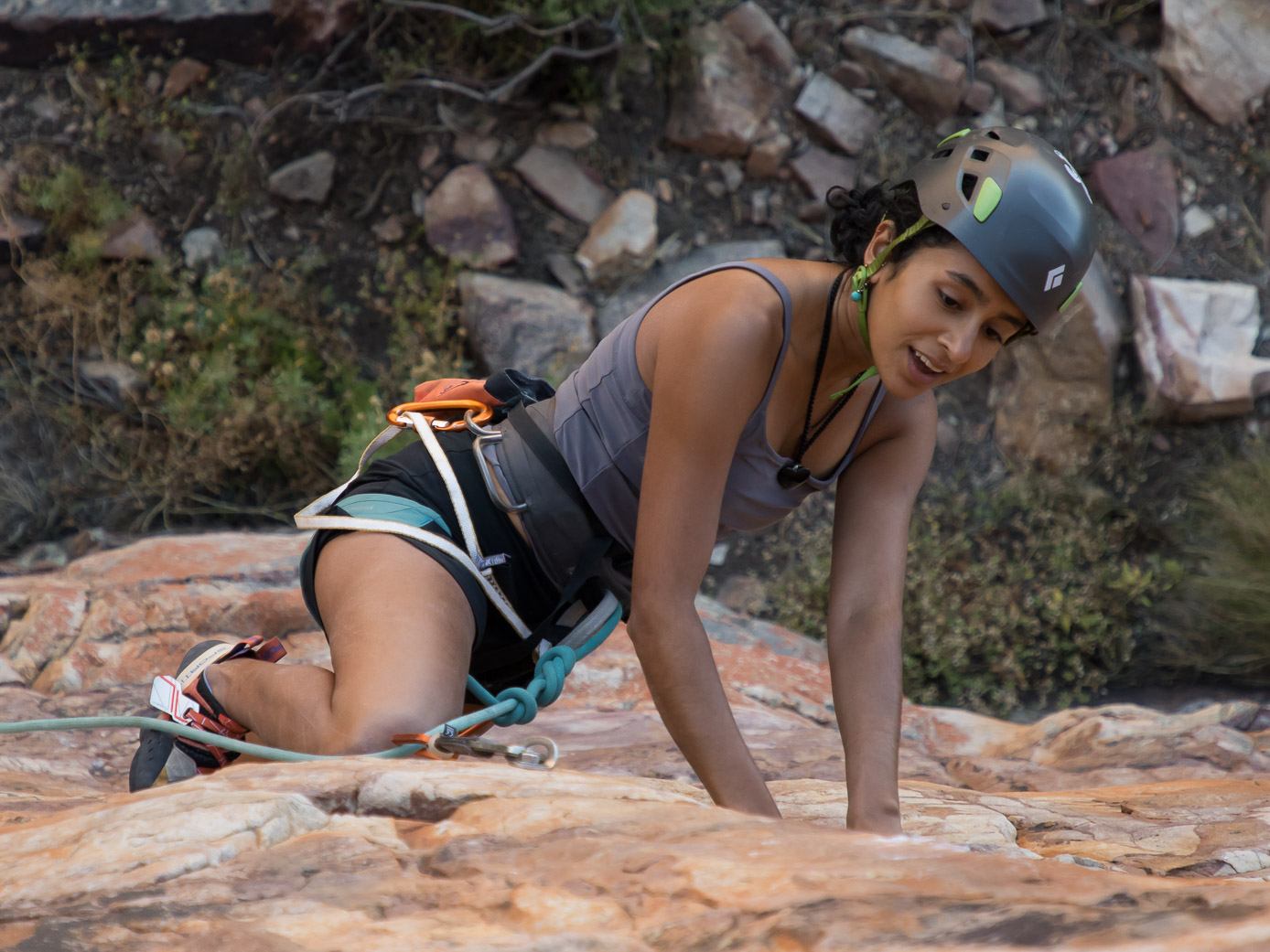
Think a few moves ahead
Thinking a few moves ahead will become more important as you progress through the grades. The more technical the route, the more likely it is that the rock will dictate the use of a specific sequence. How often have you found that your left hand is on the hold that you should have with your right hand? In some situations, you can correct this by matching hands, but as holds get smaller, such a solution is less likely to work. Get into the habit of looking for those stretches of rock most likely to dictate a specific sequence and plan ahead. By now you’re seem experienced climbers rehearsing crux sequences with their mime-like antics. It might seem comical, but visualisation works.
Choose shoes carefully
Your first few pairs of shoes should be tight but not so tight that you can’t walk around in
them. Pain does not equal edging performance. If most of your climbing is on sport
routes, you’ll need to wear your shoes for at least 5 minutes at a time, and you don’t want painful shoes to detract from the enjoyment of climbing. Rather aim for as small as possible while still maintaining a level of comfort. Shape is also important. If you’re a beginner, a flat or neutral shoe will probably be more comfortable. It’s best to leave downturned shoes until your feet have toughened up and you really need the edging power. My guide to rock shoes goes into this important purchase decision in more depth.
Get comfortable taking falls
One of the surest ways to climb better is to overcome your fear of falling (if this doesn’t affect you, you’re one of the lucky few). When we’re scared, we overgrip, which wastes energy and causes our forearms to tire faster. But overcoming one’s fear of falling is no small thing. Once you’ve learned to lead and have taken a few practice falls, you have to push yourself to fall every session (assuming you’re climbing in a gym or crag where falls are safe). With time and experience, falling will start to feel normal. My article on lead climbing goes into falling in more depth and explains how to identify places where it’s safe to fall, how to avoid falling upside down, and how to give a soft catch.
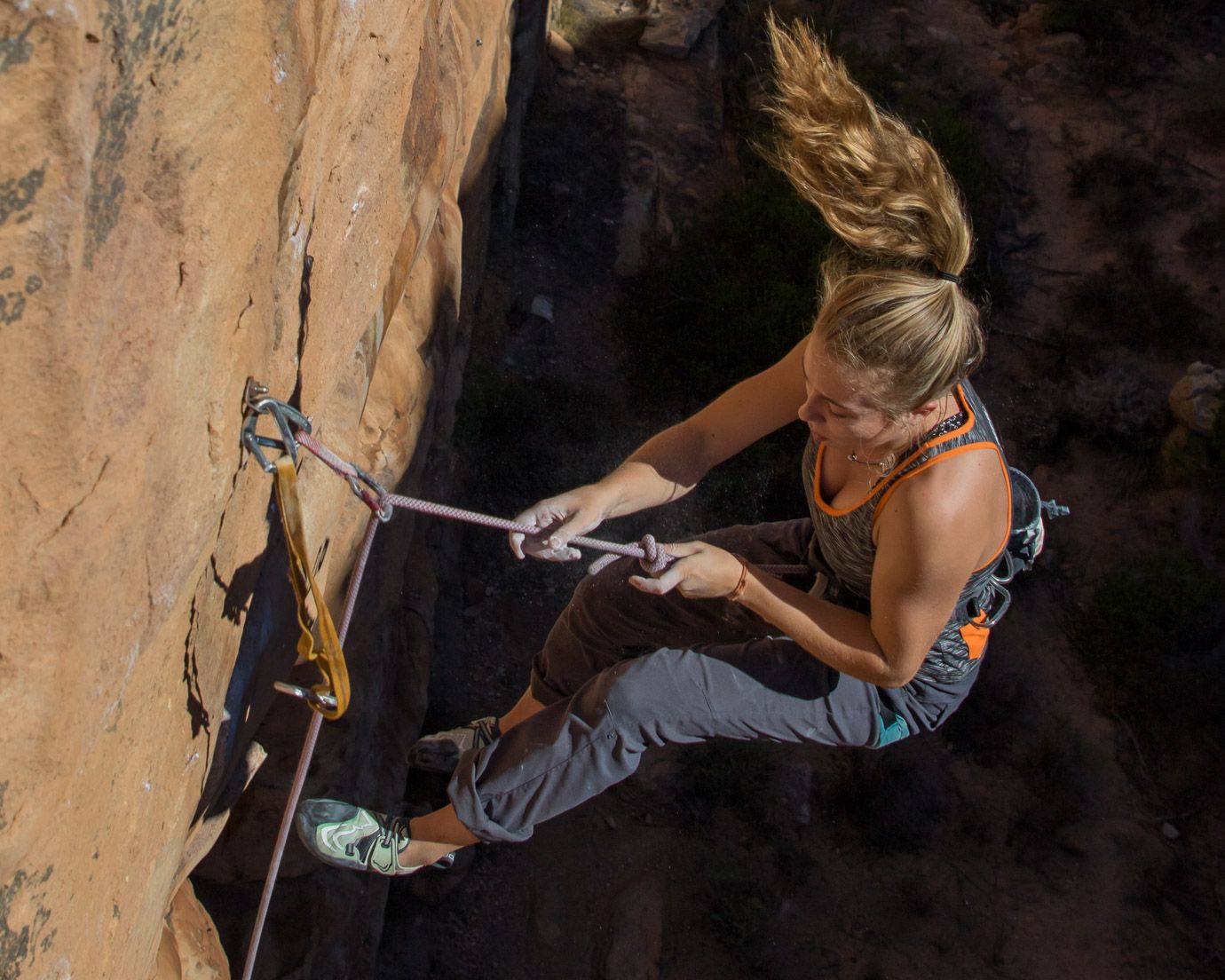
Warm up properly
Ideally, you’d be able to get in a few low-grade climbs before you get on anything that will test your fingers, but sometimes that just isn’t possible. Maybe a guided group is hogging the easy routes or the local ‘warm-up’ is a 5.11. In this case, you need another way to prime your fingers for smaller holds and more strenuous pulls. Sometimes the base of the crag offers a traverse at a sufficiently low grade, but more often you won’t be so lucky. It’s at times like these that pays to carry climber’s putty or something like a Metolius GripSaver. Many stores sell these as training or rehab aids, but these tools as just as useful for helping avoid injury when used to warm up for what would otherwise be a cold start (It’s especially important to warm up properly when temps are low).
Be picky about who you climb with
You know that guy wandering around the base of the crag, spouting tales of heroism and high adventure? He’s the last person you want to climb with. Posers risk more than their inflated sense of self when they actually rope up. They can also put their partner’s lives in danger, especially when that person is tied to him for the duration of a multi-pitch climb. The ideal partner is someone who understands their limitations and knows that if there’s a difference in two climbers’ appetites for risk, it’s necessary to dial things down to a level at which the more risk-averse climber is comfortable. Suss out potential partners at the gym or a single-pitch crag before committing to anything remotely adventurous.
Strive to be a better belayer
Besides keeping your partner safe, there are a few other excellent reasons you should strive to give a perfect belay. The first is that it will make it a lot easier to find potential partners. Experienced climbers (those you want to learn from) tend to evaluate others according to their ability to give a good catch, and if you’re seen to be a proficient and reliable belayer, you’ll have no trouble finding people to climb with. The other reason you might want to hone your belaying skills is that you’ll learn what to except from a good belay – especially during a fall – and you’ll know how to tell if a partner is doing everything they can to ensure a safe catch.
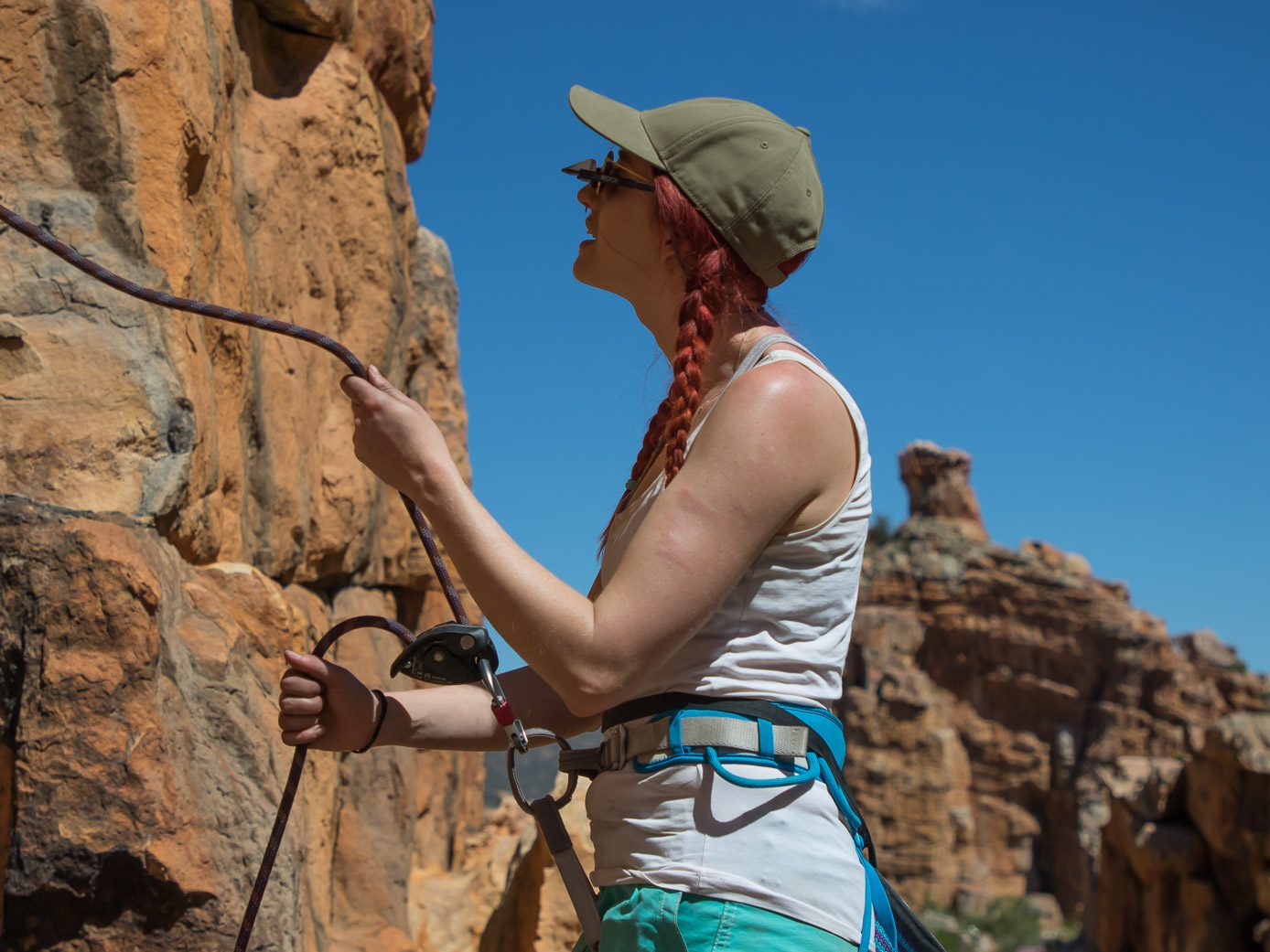
Make good communication a habit
Good communication is essential for you and your partner to climb safely. Even the slightest miscommunication – interpreting “safe” as “off belay” – can end in disaster. But safety is not the only reason you should practice good communication. A solid rapport with your partner will also give you a sense of security and confidence that may be lacking if you don’t always understand each other. Aim to be concise and clear in your communication. Calls should be short, simple, and easy to distinguish from other commands even when there’s some distance between you and your partner.
Follow a pre-climb protocol
You should follow a pre-climb protocol for the same reasons that you should practice
good communication: it will help keep you safe, and it will put you in the right frame of mind to enjoy your climb. When you look at a properly loaded belay device and correctly tied knot, you should think to yourself “I’m in the system, safe, and ready to give it my all.” If you find yourself repeatedly checking everything at random and still leaving the ground in a state of anxiety, the protocol described in this article on lead climbing can help give some structure to your pre-climb preparations.
Acquire other outdoor skills
As you grow more experienced and confident, you’ll start wandering further afield to find
rock that you haven’t climbed before. Some of these crags might require hiking and scrambling over technical terrain or even overnighting on a remote mountainside. These adventures might require skills that you haven’t fully developed yet, in which case you’d gain much by participating in any activities that will allow you to hone these backcountry skills. Learn how to purify water, cook over a fire, hike with a heavy pack, sleep rough, and practice wilderness first aid. If you intend to follow ‘the path’ of an adventure climber, these skills will prove immensely valuable.
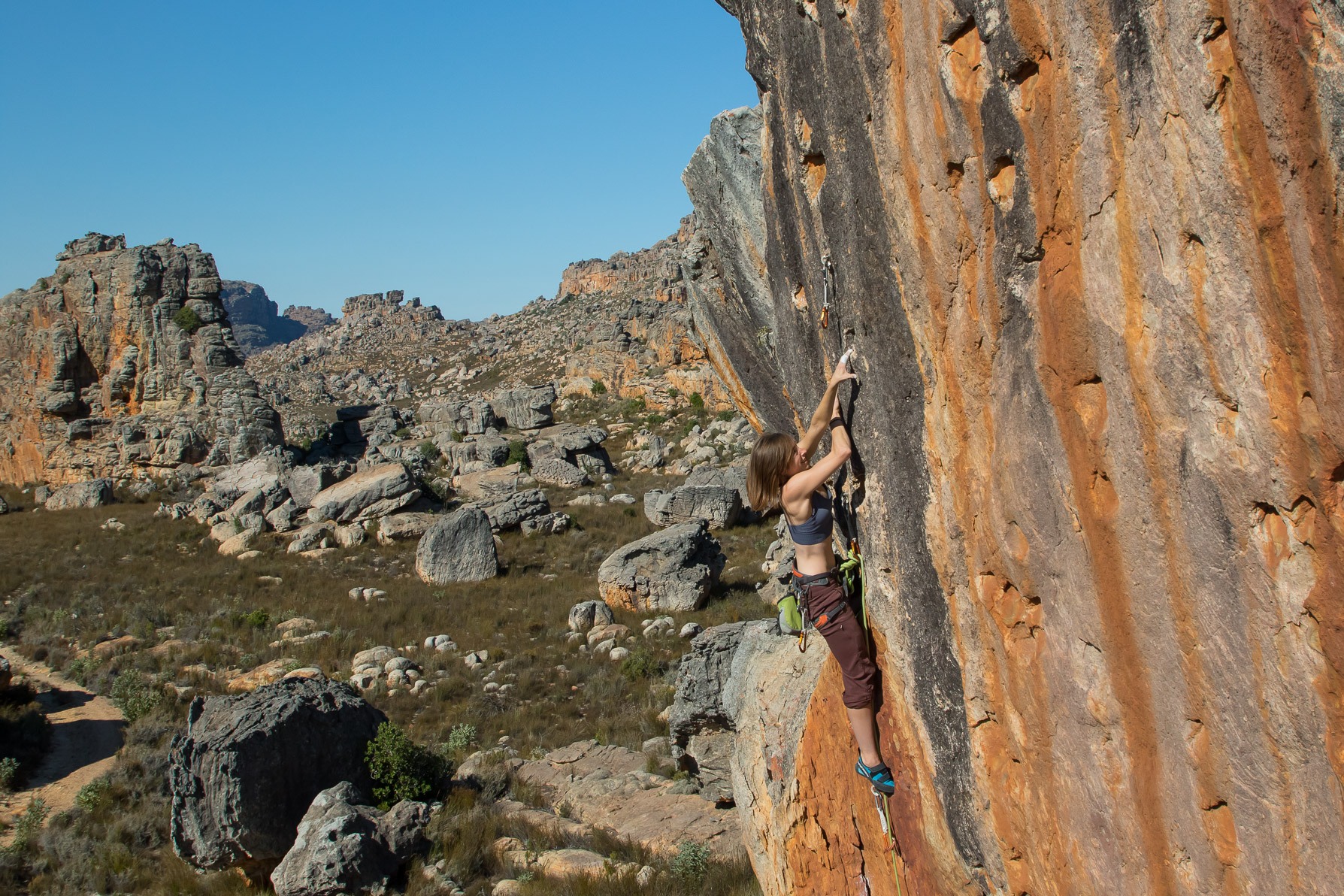
Get out there
If you’ve taken all that in and want to learn more, you’ll find many more climbing articles on this website. With topics ranging from belaying to rappelling, these pages contain a wealth of information for the new climber. Look for them under ‘climbing’ in the main menu or under the different sub-categories if it’s something more specific that you're looking for. You can also sign up for my newsletter and get all the latest from Trail & Crag delivered straight to your inbox.
